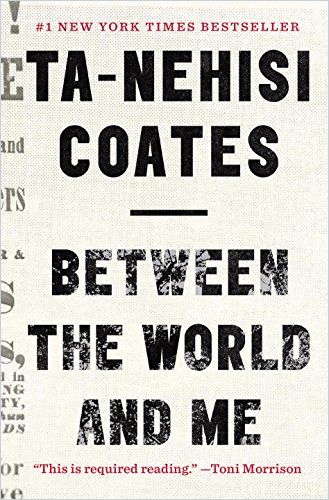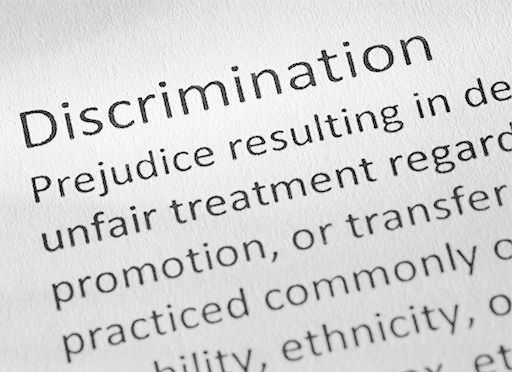Will America ever achieve racial justice? And how should Black Americans live while it doesn’t? An influential Black intellectual offers a bleak assessment of the prospects for justice in America, and advice for living in struggle today.

An Arc That Doesn’t Bend
During the spring and summer of 2015, followers of Ta-Nehisi Coates awaited the publication of his Between the World and Me with immense curiosity and, in at least one critic’s mind, joy. Coates gathered a wide readership after joining The Atlantic as a national correspondent and, later, senior editor. Since 2008, he has written such influential and sometimes radical essays as “Fear of a Black President” and “The Case for Reparations.” Coates’s blog, covering politics, race and culture, has won a devoted and engaged following.
The spring of 2015 saw the death of Freddie Gray, a 25-year-old Black man who died after a “rough ride” in the back of a police van in Baltimore; violent protests and riots ensued. In June, a white gunman murdered nine Black worshipers at the Emanuel African Methodist Episcopal Church in Charleston, South Carolina. During a season of grief and outrage, when mobile phones brought home vivid images of the beatings and murders of Black Americans, Coates’s forthcoming book offered readers not only the hope of unconventional insight and galvanizing truth but also the heartening sight of a young Black writer – one who began his life in a Baltimore hood and who had found his voice by writing outspoken essays and blog posts – now gaining national attention by producing an ambitious and timely book. New York Times columnist Michelle Alexander wrote that she had felt “overjoyed” at the news of Coates’s forthcoming book.
America understands itself as God’s handiwork, but the Black body is the clearest evidence that America is the work of men.Ta Nehisi-Coates
According to Coates, he had intended to produce a new history of the Civil War. But during his work on that book, a grand jury in St. Louis County, Missouri, failed to recommend charges against police officer Darren Wilson in the fatal shooting of Michael Brown in Ferguson the previous summer. Coates’ 15-year-old son, Samori, took this news hard, and Coates recast the book in response to his son’s incredulity. Coates took as a literary model the first section of James Baldwin’s The Fire Next Time, in which Baldwin addresses his teenage nephew in epistolary form. Coates drew his own book’s title from Richard Wright’s 1935 poem about a lynching: “The sooty details of the scene rose, thrusting themselves between the world and me.”
The Anguish of a Black Father
Coates offers an urgent, devastating book that confirms his position as one of his generation’s foremost public intellectuals and an important voice for Black Americans. Between the World and Me draws its force from its somber, elevated prose style (one reviewer suggests Coates set out consciously to emulate Baldwin’s voice) and the severity of its view. Coates marshals political theory, history and memoir to set out a bleak philosophical view of the prospects for racial justice in America – saying, in essence, that only white people can act to end racism, and Black Americans cannot expect them to do so. He simultaneously conveys the deeply personal, emotional, spiritual and parental significance of this understanding: what it means, to a life, to a soul or to a father, to say that America remains deadlocked in a state of intractable injustice, that Black parents cannot protect their children, and that no degree of personal responsibility can ensure safety for an American who inhabits a Black body.
Black people love their children with a kind of obsession. You are all we have, and you come to us endangered. I think we would like to kill you ourselves before seeing you killed by the streets that America made.Ta Nehisi-Coates
The death of another Black man figures as the book’s narrative and moral center. Prince Jones, an acquaintance of Coates’s from Howard University, died when an out-of-uniform Prince George’s County police officer shot him. Coates describes in detail how the officer had been looking for another man, whose description did not match Jones’s, and how he followed Jones from Maryland to Virginia, where Jones had intended to visit his fiancé. The officer claimed to have shot Jones because, he said, Jones tried to hit him with his Jeep. The officer faced no charges after the killing and went back to work.
Coates notes that Jones’s death, coming just after the birth of Coates’s son, crystallized Coates’s fears for his baby as well as himself. This fear turned to rage. Coates investigated the killing, and his research led to his understanding that – even within Black communities – people value order and safety over justice. That desire for order serves as a justification for the destruction of Black bodies.
The Dream and the Dreamers
In Coates’s view, for many Americans, an orderly and safe existence amounts to what he terms the Dream: an illusory concept of a blissful, peaceful, secure life. Dreamers – whether Black or white – believe they’ve achieved the Dream through their own hard work and personal virtue. But Dreamers’ serenity depends on oppression: the carceral state, police oppression and the consequences of centuries of enslavement. For Dreamers, Black bodies represent a resource, a kind of currency and a form of investment.
The struggle is really all I have for you, because it is the only portion of this world under your control.
Ta Nehisi-Coates to his son
Coates describes how Dreamers deny the reality of the oppression that sustains the Dream. Dreaming requires forgetting – about the scale of enslavement and about the ways Black people have suffered assaults and have been kept down. And Dreamers exonerate themselves by imputing criminal intentions and lack of personal responsibility to Black people. This helps the Dreamers maintain their illusion of innocence. Coates holds that racism will end only when white people awaken from the Dream.
But Coates offers his son little hope that this will happen. To struggle, for Coates, means to keep alive the memory of ancestors, to become wise, and to remember one’s own dignity and worth.
Encomia – and Disappointment
Upon its publication, Between the World and Me garnered extravagant praise: “essential” from New York Times critic A.O. Scott; “extraordinary” from New Yorker editor David Remnick; “required” from the celebrated Nobelist Toni Morrison. The book earned a National Book Award, and, for Coates, a MacArthur “genius” grant. By 2017, the book had sold more than 1.5 million copies and had been translated into 19 languages. The following year, Harlem’s Apollo Theater produced a stage adaptation, and in 2020 the book reached television screens as an HBO film. Michael Eric Dyson called the book “a willful and unapologetic act of grand literacy” – in that regard, Coates fulfilled his readers’ highest hopes.
The plunder of Black life was drilled into this country in its infancy and reinforced across its history, so that plunder has become an heirloom, an intelligence, a sentience, a default setting to which, likely to the end of our days, we must invariably return.Ta Nehisi-Coates
Yet many readers found Coates’s book a disappointment – it failed to offer the hoped-for call to action or even specific answers to many of the profound questions it raised. And critics found Coates’s outlook troubling: by placing the onus of change on white people’s shoulders, Coates relieved Black Americans of the burden of personal responsibility – but he also drained them of moral agency. And because Coates despairs of white people’s potential to awaken, his universe becomes one in which agency doesn’t exist at all, for Blacks or whites. For Coates, human activity reduces to physical laws, and people become “menaces of nature.”
Critics also point out a fundamental lack of nuance in Coates’s account; perhaps the visceral nature of Coates’s fear constrains him from seeing certain distinctions that might suggest hope. Complexities of motive and influence among both Black and white Americans, once recognized, might allow for a less pessimistic assessment of the prospects for justice – and reveal a way forward that Coates, for all his sagacity, has so far failed to see.






